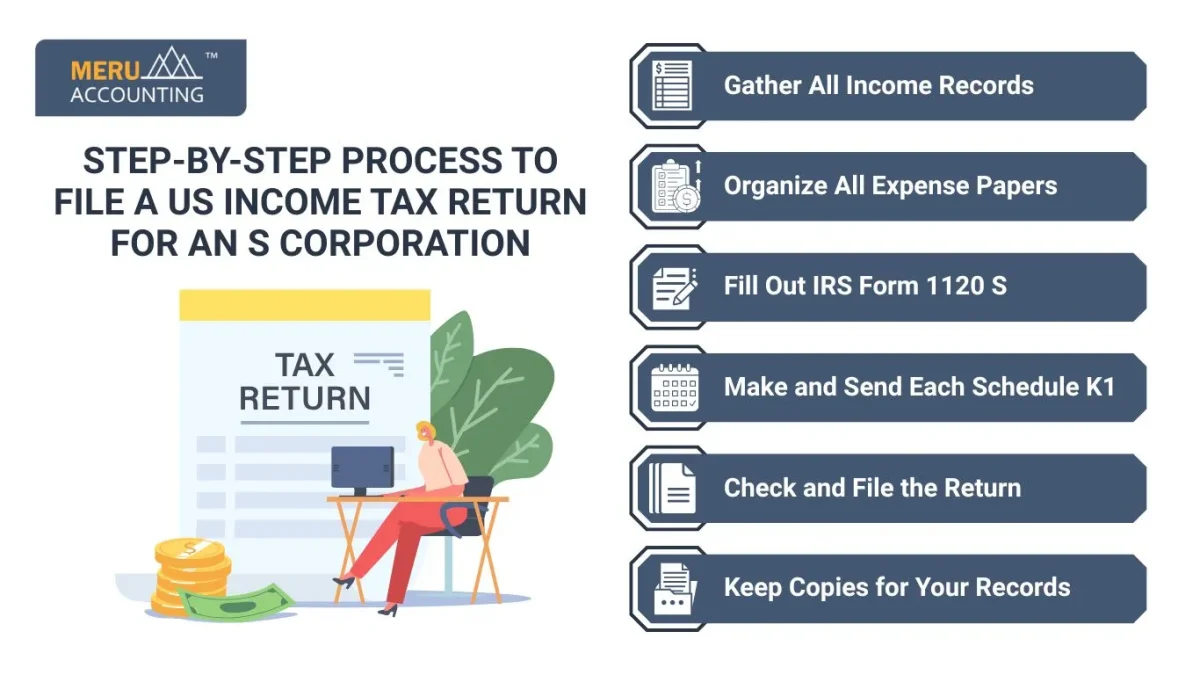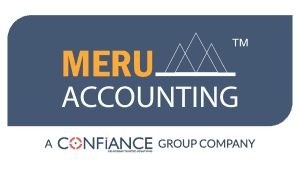Guide to Filing a US Income Tax Return for an S Corporation
Filing a US income tax return for an S Corporation is a key step for U.S.-based businesses with S Corp status. The IRS does not tax S Corporations at the corporate level. Instead, profits and losses go to the shareholders, who report them on their returns. Still, the S Corp must file its return each year using the right forms and details.
A complete and correct S Corporation income tax return helps avoid late fees, errors, and audits. In this guide, we explain the full filing process under U.S. tax law, share key forms to use, and help you avoid common mistakes. Whether you’re filing for the first time or need a checklist, this blog gives you a clear path to file your return correctly.
Introduction to S Corporations and Their Tax Structure
An S Corporation is a small business structure. It gives owners the perk of limited risk, like a regular corporation. At the same time, it avoids double taxation. The S Corporation income tax return follows rules that are not the same as regular tax forms. The profits and losses go straight to the shareholders’ tax returns. This setup is called pass-through taxation. It keeps the business from paying tax at the corporate level.
This tax setup helps lower the total tax burden for many small firms. This is one reason many in the US choose it for their business. But filing the income tax return for an S Corporation still needs care and the right documents.
What Does a US Income Tax Return for an S Corporation Mean?
An S Corporation income tax return is a yearly report that the IRS needs. It shows the business’s income, gains, losses, and more. Even with no tax to pay, the S Corporation must file a return. This return is sent using IRS Form 1120-S.
Along with Form 1120-S, each shareholder gets a Schedule K-1. This shows what share of income or loss they must report on their taxes. Filing a US income tax return for an S Corporation helps keep your business in good standing. Missing a filing can lead to fines or trouble with the IRS.
Important IRS Forms for Filing an S Corporation Income Tax Return
Form 1120-S: The Main Tax Form
Every S Corp must file Form 1120-S. This form shows full income, all costs, and final profit. It also includes details about shareholders and shares owned. You must fill it out fully and on time.
Schedule K-1: Shareholder Statements
Each owner in an S Corp gets a Schedule K-1. This form shows each owner’s part of the profit, loss, and other details. These are needed to file their taxes. If you miss or delay sending K-1s, it can lead to fines.
Form 2553: To Elect S Corporation Status
If your business is new, you must use Form 2553 to become an S Corporation. You file this only once. It lets the IRS treat your firm as an S Corp for tax purposes. You must file it early, or your S Corp status may get delayed or denied.
Step-by-Step Process to File a US Income Tax Return for an S Corporation
Gather All Income Records
Start by collecting each record that shows the business income. Use sales slips, bank notes, or service bills. You need these to report the income in your S Corporation return. Clean records help avoid errors and delays.
Organize All Expense Papers
Next, bring together all the records for business costs. This includes rent, wages, office tools, and other services. Clean and clear records will help when you file your US income tax return for an S Corporation.
Fill Out IRS Form 1120 S
Use your income and cost numbers to fill IRS Form 1120 S. Enter each figure with care. Check each line twice. The form must have your full details and must be signed before you send it.

Make and Send Each Schedule K1
For each owner, you must make a Schedule K1. This form tells how much profit or loss each person will report. Send the K1 form to the owner and also to the IRS.
Check and File the Return
Before you send the full return, check all parts. Look for wrong numbers, missed lines, or signs. Fix all issues. Then, file your S Corporation income tax return with the IRS before the last date.
Keep Copies for Your Records
Save a copy of all forms and papers you sent. Keep them for at least three to five years. This helps if the IRS asks questions later.
Common Mistakes to Avoid While Filing an S Corporation Income Tax Return
Missing the Filing Deadline
- Many S Corps miss the deadline to file. This can lead to late fees. Be sure to mark the due date on your calendar and file early.
Not Filing Form 2553
- Some owners forget to file Form 2553. Without this form, your S Corp status is not valid. Always file it right after forming the business.
Errors on Schedule K-1
- Wrong numbers or names on Schedule K-1 can delay your return. Double-check every K-1 before sending it.
Mixing Personal and Business Costs
- Keep personal costs out of your S Corporation income tax return. Only business costs should be reported. Mixing both can trigger an audit.
Forgetting to Sign the Return
- It may sound simple, but many returns go unsigned. The IRS will reject a return that is not signed by a key officer.
Deadlines and Penalties for Late S Corporation Tax Filings
-
Deadline for Filing Form 1120-S
The deadline is March 15 for most calendar-year S Corporations. If this date is missed, you may face fines.
-
Penalty for Late Filing
The IRS charges $220 per shareholder each month the return is late. The fine can go on for up to 12 months. This adds up fast, especially for firms with many shareholders.
-
How to Get a Filing Extension
If you can’t file on time, submit Form 7004. This gives you a six-month extension. But you must file it before the original deadline.
-
When to Send Schedule K-1
Each shareholder should get their K-1 by March 15, too. Delays can hurt their filing and cause issues for your business.
-
Avoiding Repeat Mistakes
Stay alert and plan each year. Use reminders or hire help to stay on time and avoid repeating filing mistakes.
Filing a US income tax return for an S Corporation needs care, skill, and time. At Meru Accounting, we take this burden off your hands. Our experts know the full filing process. We ensure your S Corporation income tax return is filed correctly and on time. We also prepare Schedule K-1s for each owner, handle all forms, and help avoid costly errors.
FAQs
- When is the S Corporation income tax return due?
It’s due on March 15 each year. If the date falls on a holiday or weekend, it moves to the next business day. - Can I file an S Corporation tax return online in the US?
Yes, you can file the US income tax return for an S Corporation online. Use IRS-approved tools or work with a trusted tax team like Meru Accounting to e-file Form 1120 S with ease. - Do I need to file if my S Corporation had no income?
Yes. Even if your S Corp made no money, you still must file a return for the year. - What if I forget to send Schedule K-1s?You may face fines and create delays in your shareholders’ returns. Always send K-1s with your return.
- What happens if I miss the filing deadline?
You may face a fine of $220 per shareholder per month for up to 12 months. File early or request an extension.








